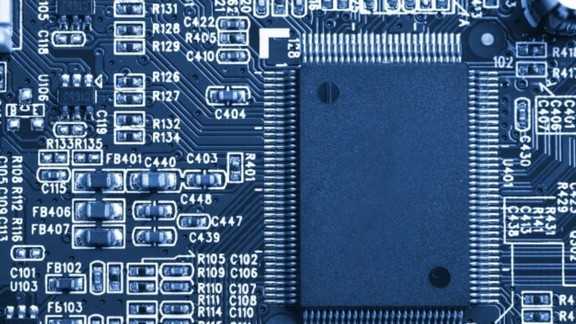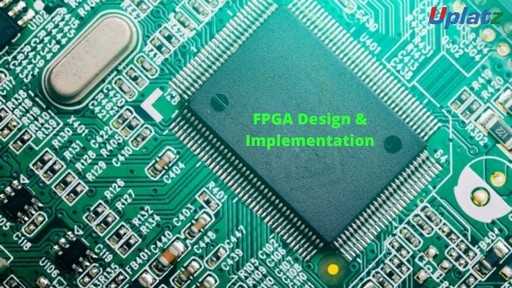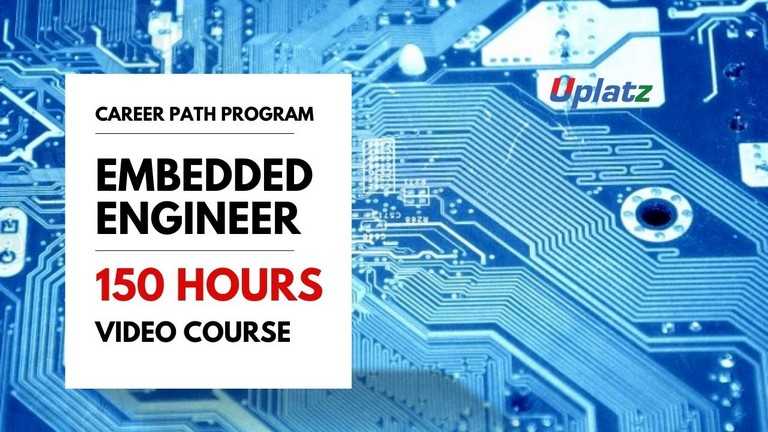Assembly Language using ATMEL AVR Microcontroller
Learn to do Assembly Language programming with ATMEL AVR microcontroller, an enhanced RISC high-speed 8-bit microcontroller. Become Embedded Engineer. Price Match Guarantee
Full Lifetime Access
Access on any Device
Technical Support
Secure Checkout
Course Completion Certificate
Price Match Guarantee
Full Lifetime Access
Access on any Device
Technical Support
Secure Checkout
Course Completion Certificate
 81% Started a new career
BUY THIS COURSE (GBP 29)
81% Started a new career
BUY THIS COURSE (GBP 29)
-
 91% Got a pay increase and promotion
91% Got a pay increase and promotion
Students also bought -
-

- VLSI - PLC - Microcontrollers - Assembly Language
- 23 Hours
- GBP 29
- 325 Learners
-

- FPGA Design & Implementation
- 12 Hours
- GBP 29
- 95 Learners
-

- Career Path - Embedded Engineer
- 150 Hours
- GBP 99
- 2344 Learners

AVR is a family of microcontrollers developed since 1996 by Atmel, acquired by Microchip Technology in 2016. These are modified Harvard architecture 8-bit RISC single-chip microcontrollers. AVR was one of the first microcontroller families to use on-chip flash memory for program storage, as opposed to one-time programmable ROM, EPROM, or EEPROM used by other microcontrollers at the time.
AVR stands for Advanced Virtual RISC and is named after its creators. The AVR Microcontroller is a popular general-purpose microcontroller that is especially well-suited to embedded systems and robotics. It is a tiny chip with embedded application support, such as measuring devices, security systems, robotics, remote control applications, scrolling message displays, and so on. By exposing students to real functioning projects, the training emphasises applied understanding of the fundamentals.
Key Features of ATMEL AVR Microcontrollers include:
1) Architecture: Modified Harvard architecture, for simultaneous fetching of instructions and data.
2) RISC Design: Reduced Instruction Set Computer design, simplifying the instruction set and making it easier to program.
3) Flash Memory: On-chip flash memory for program storage, allowing for easy reprogramming.
4) Peripherals: Wide range of built-in peripherals, such as timers, counters, ADC, UART, SPI, I2C, etc.
5) Applications: Used in various embedded systems, including consumer electronics, industrial automation, automotive, and more.
6) Arduino: Many Arduino boards are based on AVR microcontrollers, making them popular.
Assembly Language equates to machine code but is more readable and uses mnemonics. The statements are made up of opcodes and operands, which are directly translated into machine code. Each CPU has its own assembly language. Assembly language is a low-level programming language. It equates to machine code but is more readable. It can be directly translated into machine code, but it uses mnemonics to represent the instructions to make it easier to understand. In order to convert assembly language into machine code it needs to be translated using an assembler. This converts each statement into the specific machine code needed for the hardware on which it is being run.
Assembly Language mainly consists of mnemonic processor instructions or data and other statements or instructions. It is produced with the help of compiling the high-level language source code like C, C++. Assembly Language helps in fine-tuning the program.
Due to the mandated short development time and high-quality requirements, programming languages (Assembly or High-level) have become a need. Because they are more portable and readable than the low-level instructions particular to each microcontroller architecture, they make it easier to maintain and reuse code. Good coding style, not only the programming language, ensures great readability and reusability. As a result, the AVR MCU peripherals, header files, and drivers are all developed with this assumption in mind. Key scenarios where Assembly Language is preferred choice for the programming of Atmel AVR microcontrollers are:
a) if bugs have to be analyzed,
b) if the program executes different than designed and expected,
c) if the higher-level language doesn't support the use of certain hardware features,
d) if time-critical in line routines require assembly language portions,
The Assembly Language using ATMEL AVR Microcontroller course by Uplatz outlines the processes of programming AVR microcontrollers (MCUs) effectively, as well as coding recommendations to make code more legible and reusable. This Atmel AVR Microcontroller course offers instructions tailored to new users, making it simple to understand while still being enjoyable and amusing.
Course/Topic - Assembly Language using ATMEL AVR Microcontroller - all lectures
-
In this lecture session we learn about how CPU works and also talk about AVR microcontrollers.
-
In this lecture session we learn about what register is and also talk about different types of registers in brief.
-
In this lecture session we learn about status registers in VLSI and also talk about features of status registers and accumulator flags.
-
In this lecture session we learn about the use of SRAM as a stack and also talk about features of SRAM in VLSI.
-
In this lecture session we learn about BIT manipulations and also talk about how to convert BCD coded digits in brief.
-
In this lecture session we learn about hardware multiplication of 8 by 8 bit binary and also talk about features of hardware multiplication.
-
In this lecture session we learn about decimal fraction and also talk about features of decimal fraction in brief.
-
In this lecture session we learn about how we convert decimals to binary floating point numbers in assembled languages.
-
In this lecture session we learn about classical dividing by 10 with a counting loop.
-
In this lecture session we learn about properties of the egg timer with AT mega 8515 and also talk about features of egg timer in brief.
-
In this lecture session we learn about properties of RGB - Uhr mit ATmega 18 and also talk about features of hardwares.
-
In this lecture session we learn about features of the spotlight with ATiny 13 and also talk about factors of spotlight.
-
In this lecture session we learn about features of the signal generator with ATmega and network and also talk about functions of signal generators.
-
In this lecture session we learn about pin description and also learn how we write a code.
-
In this lecture session we learn about what is USART and also talk about how we use USART in VLSI microcontroller in brief.
-
In this lecture session we learn about AVR DO in ATMEL microcontroller and also talk about features of AVL.
-
In this lecture session we learn about if else statements and also talk about factors of LOOP in programming.
a).Learn basics of ATMEL AVR Microcontroller
b).Practice Assembly Language using ATMEL AVR Microcontroller
c).Pick up knowledge on programming in Assembly Language - syntax, procedures, conditional processing, macros, etc.
d).Learn High Level Language and 16-bit & 32-bit DOS/Windows programming
e).Learn about Microcontrollers and get general coverage on MSP430 Microcontroller, AVR Microcontroller
f).Understanding AVR's fundamental principles and architecture
g).Understanding the many types of microcontroller architecture and AVR addressing modes
h).Understanding the value of different peripheral devices and programming and interfacing an AVR microcontroller
i).Educate students on several forms of external interfaces, such as LEDs, LCDs, Keypad Matrixes, Switches, RF (Radio Frequency Communication), Seven Segment Displays, DTFM, GSM, DC Motors, and Stepper Motors, among others.
This course provides a comprehensive introduction to assembly language programming using the ATMEL AVR microcontroller. It covers the fundamentals of microcontroller architecture, programming concepts, and practical applications.
Week 1: Introduction to Microcontrollers
a).Overview of microcontrollers and their applications
b).Introduction to ATMEL AVR architecture
c).Comparison with other microcontrollers
d).Development tools and environments (AVR Studio, Atmel Studio)
Week 2: Assembly Language Fundamentals
a).Basics of assembly language
b).Understanding binary, hexadecimal, and decimal number systems
c).Instructions set overview for AVR
d).Assembling and linking processes
Week 3: AVR Architecture and Instruction Set
a).AVR microcontroller architecture: registers, memory, and I/O
b).Instruction categories: data transfer, arithmetic, logic, control
c).Addressing modes: immediate, direct, indirect, indexed
d).Writing simple programs using basic instructions
Week 4: Input/Output Operations
a).Configuring I/O ports
b).Reading from and writing to digital and analog I/O
c).Using timers and interrupts
d).Example projects: LED blinking and button control
Week 5: Data Manipulation and Control Structures
a).Using arithmetic and logic instructions
b).Implementing control structures: loops, conditionals
c).Stack operations and subroutine calls
d).Project: Simple calculator using assembly language
Week 6: Advanced AVR Features
a).Utilizing timers for PWM and time delays
b).Implementing serial communication (USART)
c).Interfacing with sensors and peripherals (e.g., LCD, ADC)
d).Project: Displaying sensor data on an LCD
Week 7: Debugging and Optimization
a).Common errors in assembly programming
b).Techniques for debugging AVR programs
c).Code optimization strategies for performance
d).Introduction to simulator tools
Week 8: Final Project and Review
a).Guidelines for final project
b).Review of key concepts and programming techniques
c).Presenting projects: demonstration and discussion
d).Future directions in embedded systems
Recommended Resources:
Textbooks:
a)"The AVR Microcontroller and Embedded Systems" by Muhammad Ali Mazidi
b)"Programming and Customizing the AVR Microcontroller" by Dhananjay Gadre
Online Tutorials:
a) Atmel AVR documentation
b) YouTube channels focused on AVR programming
Assessment:
1) Weekly assignments and lab exercises
2) Mid-term project
3) Final project presentation
The Assembly Language using ATMEL AVR Microcontroller Certification ensures you know planning, production and measurement techniques needed to stand out from the competition.
The Atmel AVR instruction set is the machine language for the Atmel AVR, a modified Harvard architecture 8-bit RISC single chip microcontroller which was developed by Atmel in 1996. The AVR was one of the first microcontroller families to use on-chip flash memory for program storage.
Assembly Language mainly consists of mnemonic processor instructions or data and other statements or instructions. It is produced with the help of compiling high-level language source code like C, C++. Assembly Language helps in fine-tuning the program.
Uplatz online training guarantees the participants to successfully go through the Assembly Language certification provided by Uplatz. Uplatz provides appropriate teaching and expertise training to equip the participants for implementing the learnt concepts in an organization.
Course Completion Certificate will be awarded by Uplatz upon successful completion of the Assembly Language online course.
The Microcontroller PIC / AVR embedded developer draws an average salary of $93,977 per year depending on the knowledge and hands-on experience.
A microcontroller (MCU), is the smallest and most basic computer. Running on a single chip, it has a CPU, memories (RAM and ROM), and interfaces (input/output ports) for additions like video, audio, USB, and cameras. Unlike a microprocessor, which serves more generalized applications, a microcontroller aims at more specific applications.
The job role of Microcontroller PIC / AVR embedded developer is to Create embedded systems design, software development and integration, creating Proofs of Concept and demo applications, using AVR and PIC microcontrollers.
Note that salaries are generally higher at large companies rather than small ones. Your salary will also differ based on the market you work in.
The following are the job titles:
a).Microcontroller PIC / AVR embedded developer
b).Embedded Software Engineer
c).Junior Electrical & Electronics Engineer ( IOT & Embedded C )
d).Designer Engineer - Electronics
Q1.What is assembly language?
Ans-Assembly language is a low-level programming language that is specific to a particular type of processor. It is typically used for system programming or writing device drivers.
Q2.Can you explain how an assembler works?
Ans-An assembler is a computer program that translates assembly language into machine code, which can be run on a computer. Assembly language is a low-level programming language that is specific to a particular type of computer architecture. An assembler program takes as input a program written in assembly language and outputs a machine code program that can be run on the computer.
Q3.How does the program counter work in relation to assembly language?
Ans-The program counter is a register that holds the address of the next instruction to be executed. In assembly language, the programmer can manipulate the program counter directly to change the flow of execution. This can be useful for implementing loops or jump statements.
Q4.Can you provide some examples of real-world applications that use assembly language?
Ans-Assembly language is used in a variety of real-world applications, including:
a).Operating system kernels
b).Device drivers
c).Embedded systems
d).High-performance computing
e).Video game development
Q5.What are labels and how are they used in assembly language?
Ans-Labels are used to give a specific location in memory a name. This can be useful for creating loops or jump points in your code. Labels can also be used to store data values that can be accessed by name.
Q6.What are literals?
Ans-A literal is a value that is hard-coded into the program and cannot be changed. This can be a number, like 42, or a string of text, like “Hello, world!”.
Q7.Can you explain what registers are in the context of assembly language?
Ans-In assembly language, registers are locations in the CPU where data can be stored and manipulated. There are different types of registers, each with their own specific purpose. For example, there are general-purpose registers, which can be used for a variety of tasks, and there are also floating-point registers, which are used specifically for storing floating-point numbers.
Q8.What are the different types of addressing modes available in assembly language?
Ans-The different types of addressing modes available in assembly language are:
a).Absolute: The address is specified as an absolute value.
b).Relative: The address is specified as a value relative to the current instruction pointer.
c).Indirect: The address is specified as a value that is read from another location in memory.
d).Immediate: The value is encoded as part of the instruction.
Q9. Mention a few applications of a microcontroller?
Ans-The voltmeter, ammeter, hand-held metering system, and measuring rotating objects all employ microcontrollers. Devices for controlling and sensing light employ microcontrollers. Microcontrollers are utilized in washing machines, cameras, and mobile phones.
Q10.Which of the microcontroller's pins are most useful, along with their functions?
Ans-ALE: As Harvard architecture is the foundation of the 8051. The program and data memory are connected externally separately. 16 lines are used to access this external memory, of which 8 lines are used as data lines in addition to serving as lower order 8 lines of a 16-bit external address. We utilize an 8-bit external latch to make these 8 lines function first as address lines and then as 8 lines for data. The control signal for latching the low byte of the address during access to external memory is provided by the Address Latch Enable output pulse.
Q11.What exactly is a microcontroller?
Ans-A microcontroller is a chip, made to handle a particular function or application. The microcontroller is made up of the CPU (microprocessor), RAM, ROM, I/O ports, timers, counters, and other components. There are microcontroller kit providers, timers, interrupt serial communication, and interface designs.
Q12.Describe the microcontroller interface with an external EPROM device.
Ans-This and similar inquiries about how a microcontroller interacts with ROM or any serial communication devices are frequently made about hardware positions. Refer to connecting peripherals to a microcontroller device. I2C is mostly used to interface EEPROM with microcontrollers. The I2C master-slave protocol goes by this name. I2C consists of two signals: a clock signal and a data signal. The Master has control over SCL, the clock signal. Utilizing clock signal modification, data is sent. All of the slaves connected to the master are run by the same clock. The interface with microcontrollers can be depicted in the figure.
Q13.Explain the use of serial communication flags and registers in microcontrollers
Ans-Serial communication is carried out using SCON, SBUF, TI, and RI. The USART Control and Status Register B (UCSRB) register is used to enable serial communication, meaning that the microcontroller's Tx and Rx pins are prepared to send and receive data. The RXEN bit will permit data reception, whereas the TXEN bit will enable data transmission.
Q14.What are the 3 basic applications of a microcontroller?
Ans-Here are 3 basic applications of a microcontroller. They are embedded systems, IoT purposes, and light, and temperature sensing devices.
Q15.What are the types of microcontrollers?
Ans-There are different types of microcontrollers such as ARM, AVR, MSP, 8051, and so on.
Q16.What are the main components of a microcontroller?
Ans-Here are some of the main components of a microcontroller. They are CPU, memory, oscillator, I/O ports, and Serial Bus Interface.
Q17.Which is the first microcontroller?
Ans-The first microcontroller was developed by the Intel Corporation in 1971. It is a 4-bit microcontroller and is shortly called i4004.









